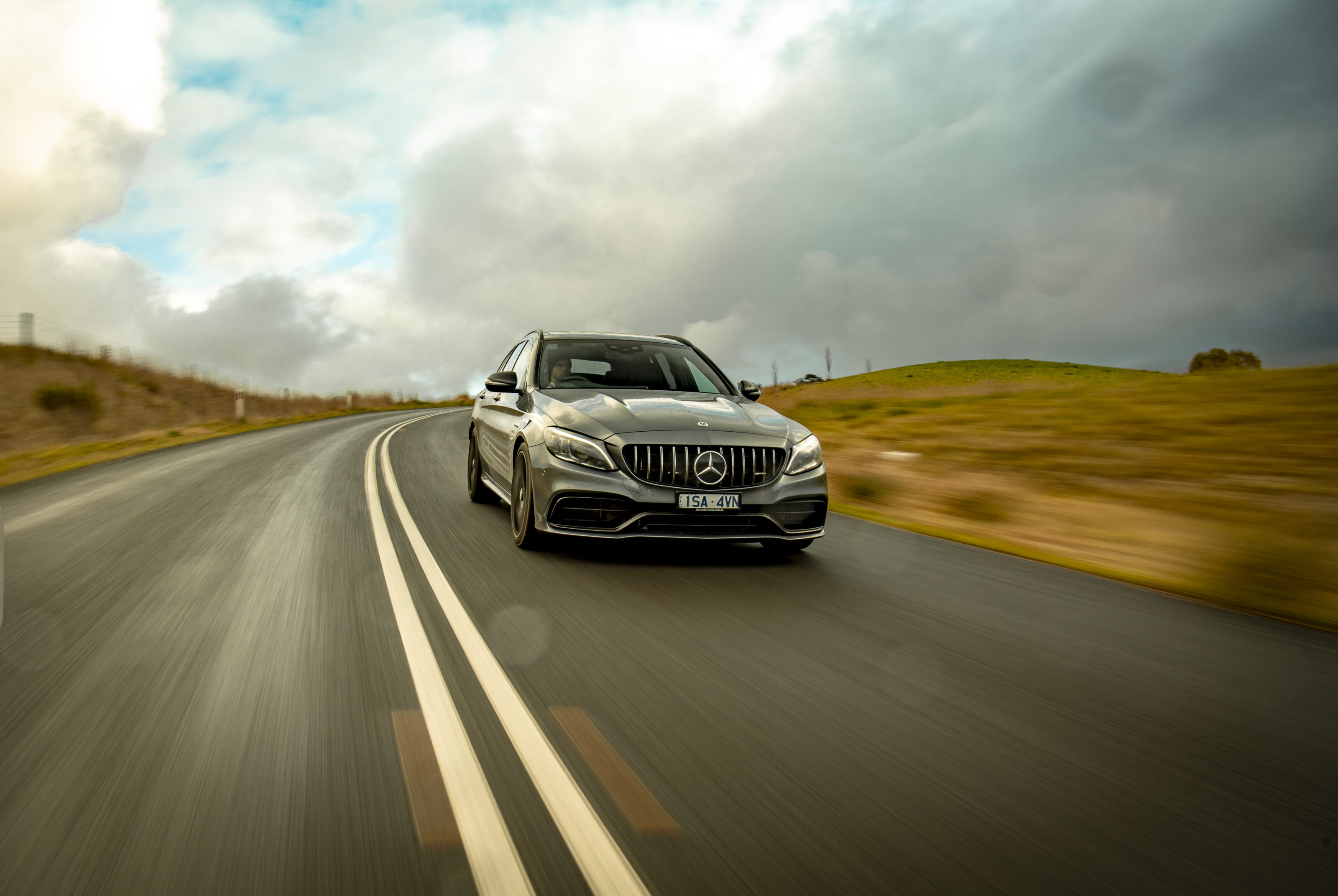The elderly woman looks up with a scowl, unimpressed with the disturbance to her sweeping. I can’t blame her; the 4.0-litre twin-turbo V8 in this C63 AMG that’s disturbed her reverie doesn’t make a particularly friendly noise. Even at low rpm it emits a deep, guttural growl that reverberates your innards.
Her days ahead aren’t about to become any more peaceful. It’s February 2015 and early days for the international launch program of the new-generation C63. Based out of the stunning Autodromo Internacional do Algarve, better known as Portimão, in southern Portugal, the road loop winds its way through the surrounding hills, navigating numerous tiny towns unaccustomed to thundering V8s.
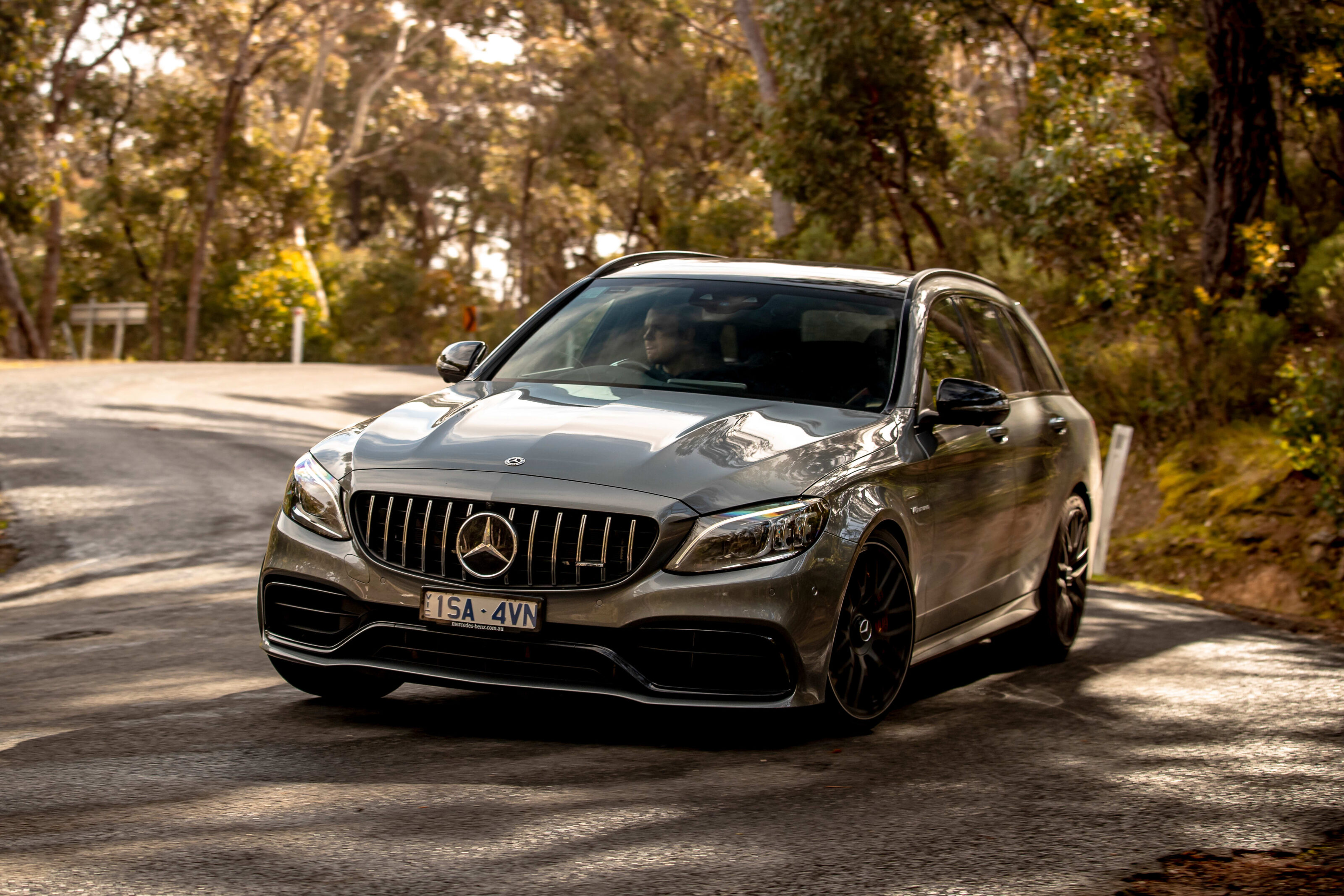
There is plenty to talk about with the all-new version of Merc’s mid-size muscle car but it’s the engine that dominates conversation, and with good reason. AMG has traditionally never found a horsepower it didn’t like and the new C63 S combines the best of both its rivals – the eight cylinders of the B8 RS4 and the twin-turbocharging of the F80 M3 – to develop a whopping 375kW and 700Nm. For reference, the Audi manages 331kW/430Nm and the BMW 317kW/550Nm.
It’s a high-tech unit, with sprayed-on, diamond-polished Nanoslide cylinder linings, piezo fuel injectors and turbos mounted inside the vee of the engine to help packaging and improve response.
Later, I ask AMG’s then-powertrain boss, Christian Enderle, what aspect of this mega motor he’s most proud of: perhaps the throttle response or the monstrous torque? Somewhat disappointingly, he replies “The fuel consumption; I think the combination of 8.6L/100km with 375kW is a world record.”
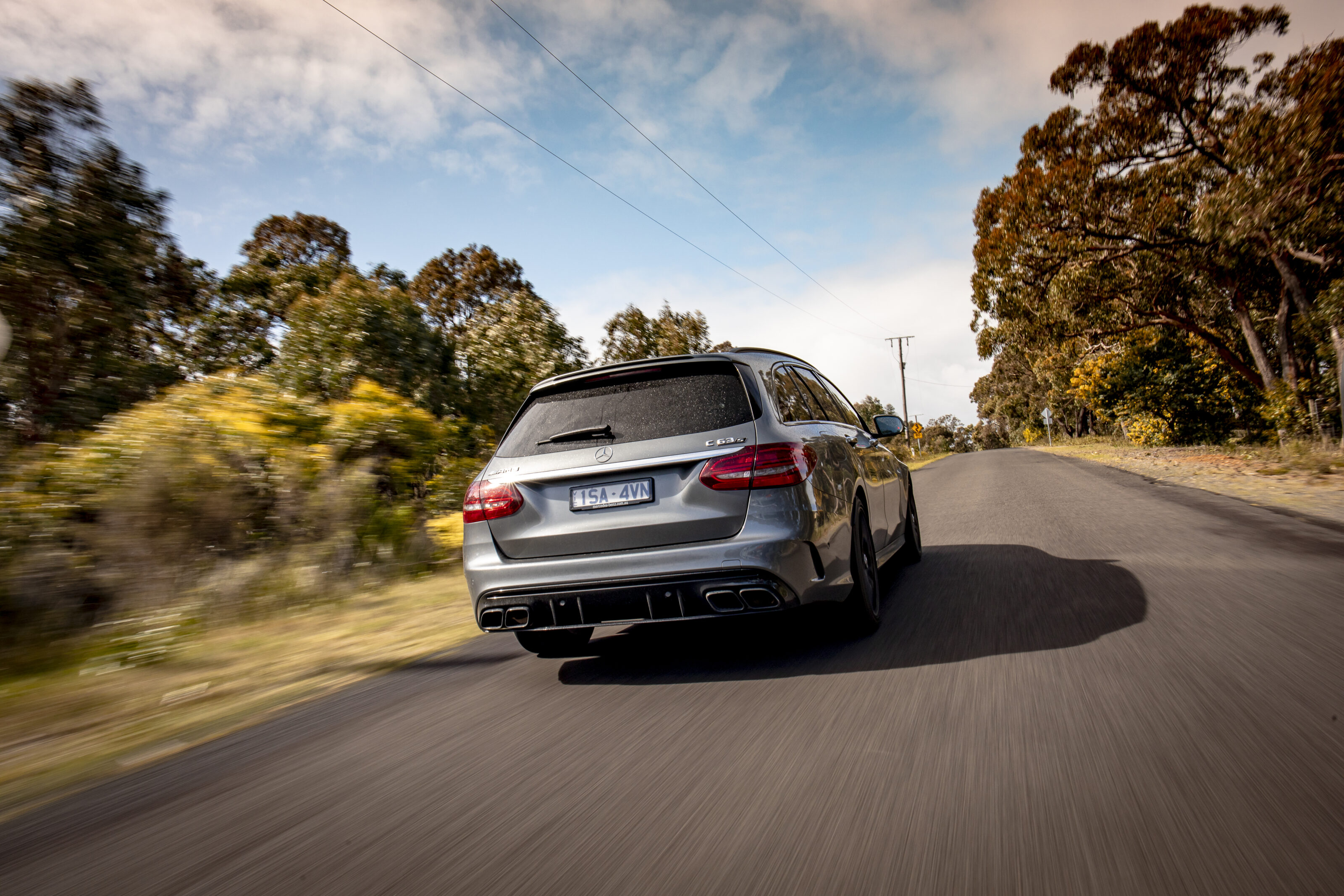
“Part of the joy of this engine is the breadth of its acoustic repertoire”
That may be so, but fast forward six or so years and the C63 S I’m currently driving certainly isn’t averaging anywhere near that. I suspect no W205 C63 S outside of a laboratory ever has. At Performance Car of the Year 2015 the C63 S – an event at which it came second, beaten only by the 991 GT3 – held the dubious honour of being the car that was furthest from its claimed fuel consumption during the test, drinking more than 20L/100km throughout. It’s a fairly typical thirst.
Despite his team’s hard work in minimising the official number, I suspect Christian is quite proud of this: it means drivers are frequently exercising both the far reaches of both the tachometer and the throttle pedal travel. You simply can’t avoid doing so as the reward is too addictive. Even in its most sensible mode the V8 sounds suitably angry, but flick the switch to Sport+ or Race and the note hardens as the exhaust flaps open.
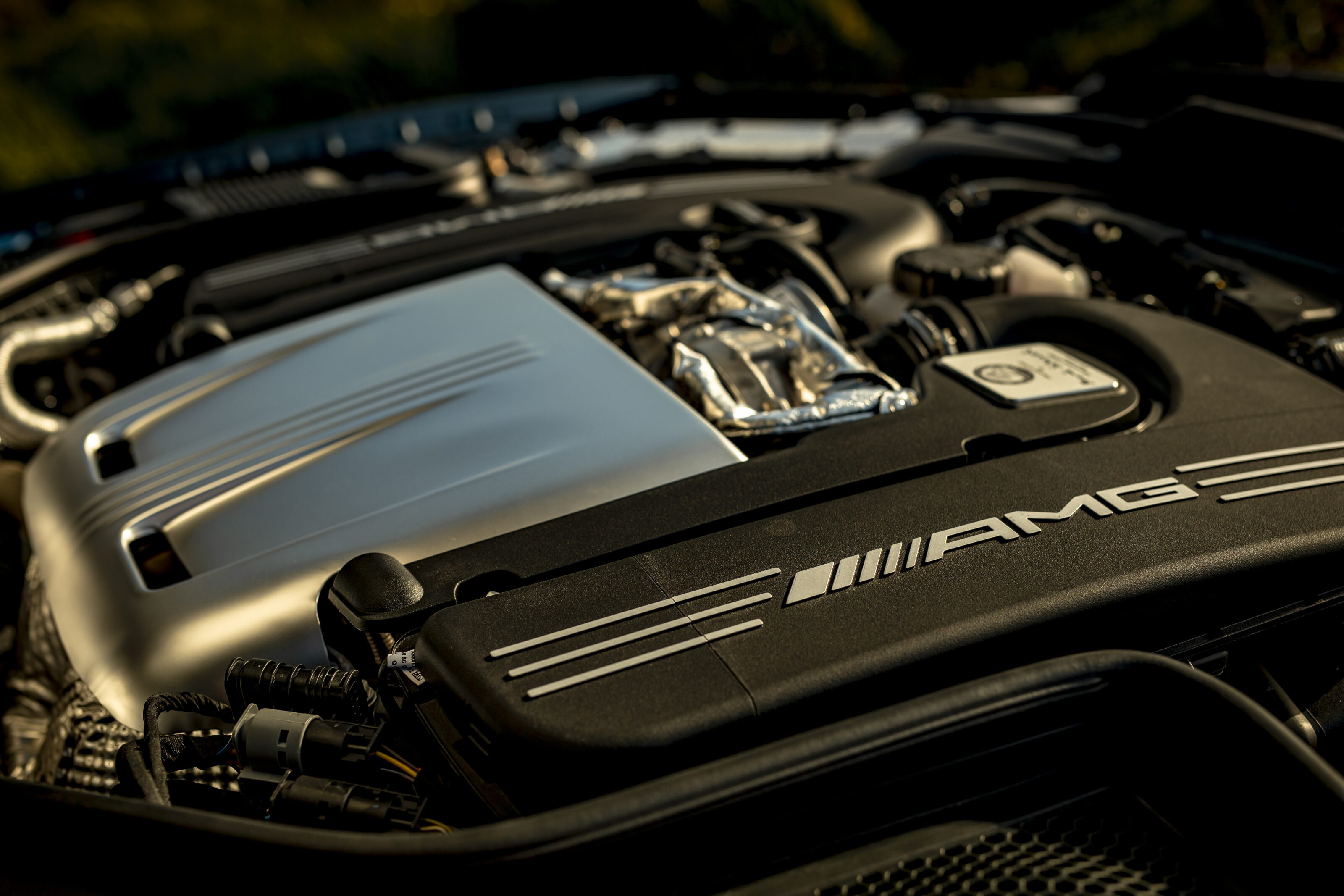
At idle it gurgles away with the rhythmic consistency of a jackhammer – dugga-dugga-dugga – but part of the joy of this engine is the breadth of its acoustic repertoire. A steadily more aggressive snarl as revs rise is accompanied by faint whines and whooshes from the turbos, crisp barks on full-throttle upshifts and vicious gunshots on the over-run, the sort of theatrics that recent noise and emissions regulations have sadly excised from newer models.
Come to a stop and another sound dominates, that of the hard-working fans furiously feeding cool air into the engine.
Moving the turbos atop the engine allowed it to fit in a much smaller space but effectively created an under bonnet oven, with nowhere for the heat to go. At the launch, Enderle admitted controlling temperatures was one of the most challenging facets of the whole operation.
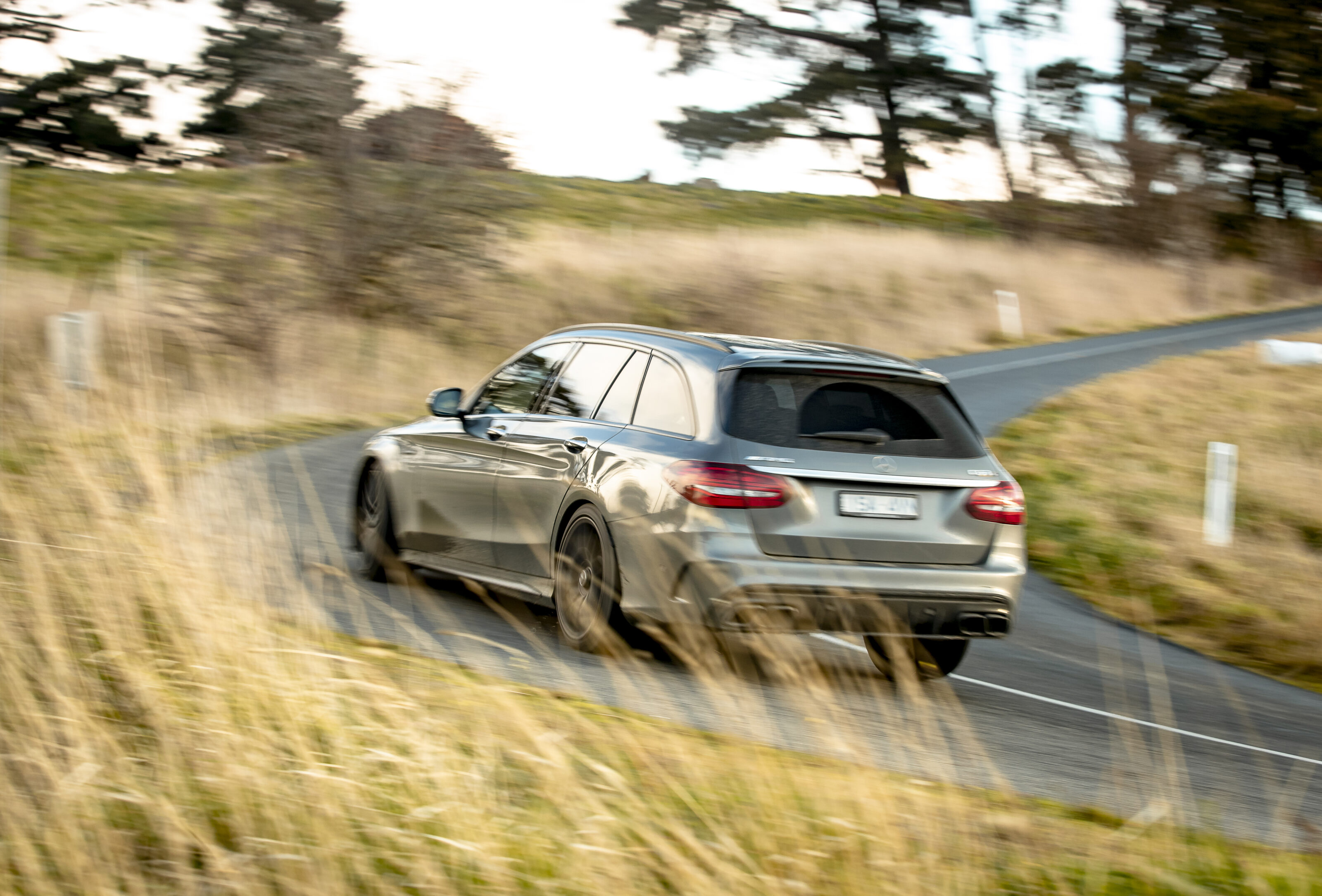
All these noises will very soon be a thing of the past. The reason we’re driving the W205 C63 S is to say farewell; not to the badge, for AMG has confirmed that the moniker will continue (it’s built up too much capital to be abandoned, especially for a smaller number), but to the eight-cylinder C-Class.
Instead, the W206 C63 will use a powered-up version of the A45’s M139 2.0-litre four-cylinder and trade its ’S’ for an ‘e’, signifying plenty of electrical boost. Total output will likely be well beyond 400kW, with all-wheel drive set to slash the 0-100km/h time to 3.5sec or less.
Regardless of the final figures, this seismic shift will put an end to the fast C-Class blueprint that has endured for 25 years: V8 engine, automatic gearbox, rear-wheel drive. The journey began with the 225kW/410Nm W202 C43 and continued through the ultra-rare (59 built) 255kW/510Nm W202 C55.
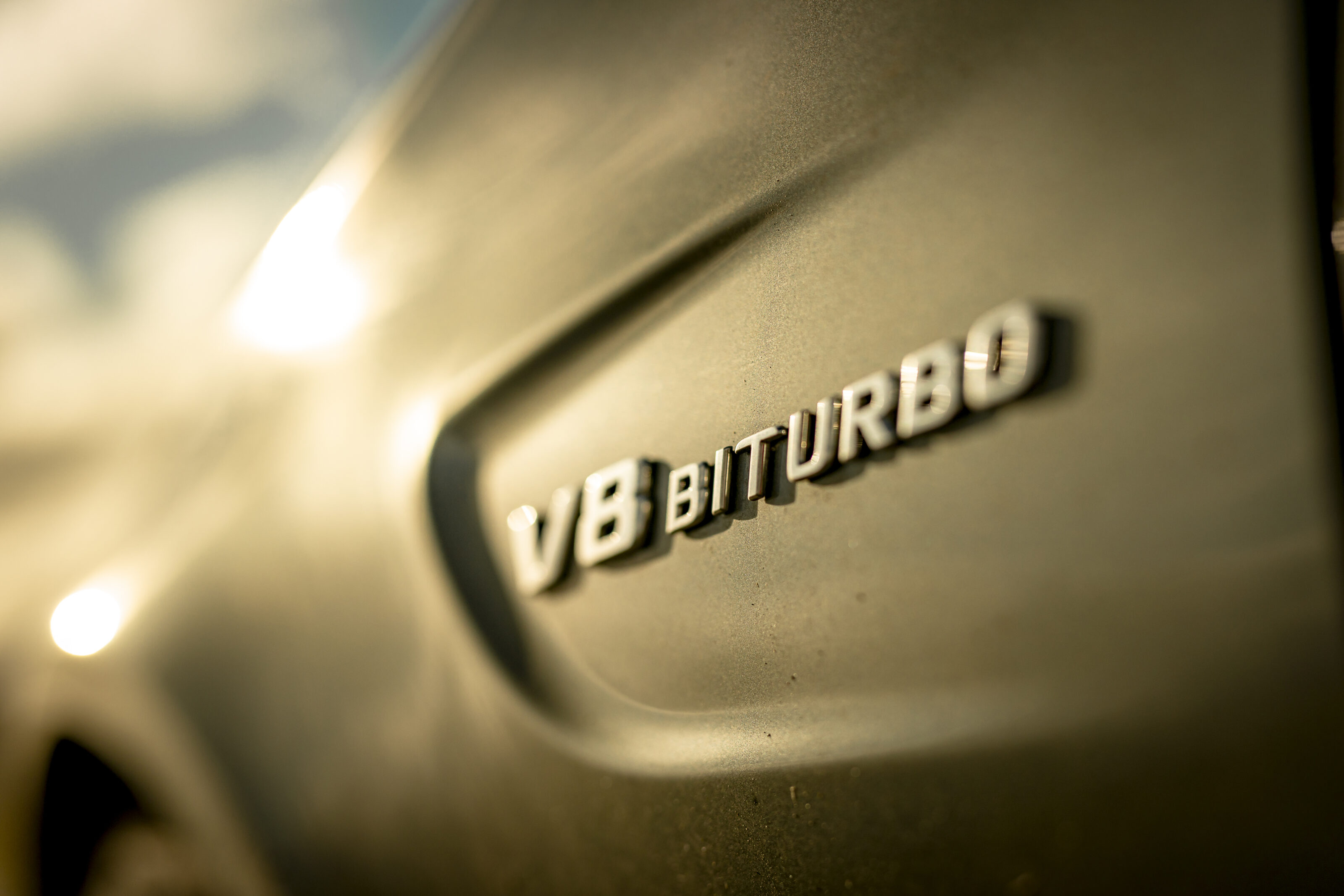
The W203 C55 improved on this with 270kW/510Nm but the W204 C63 was a quantum leap not just in terms of performance (336kW/600Nm) but also sales success. It’s not too strong a statement to say it’s the car that put AMG on the map in Australia.
It gave the W205 huge shoes to fill but it did so admirably. More grunt was only part of the picture, though. Of more importance was the new car’s ability to deploy it. Remember that at launch the W204 C63 didn’t even have a limited-slip diff, making it a single-pegger world champion, whereas the W205 scored an electronically controlled LSD from the SLS Black Series.
AMG boss Tobias Moers gave the gearbox engineers a kick up the bum, telling them not to be so conservative with shift speeds for the seven-speed wet-clutch auto, downshifts becoming twice as rapid as a result.
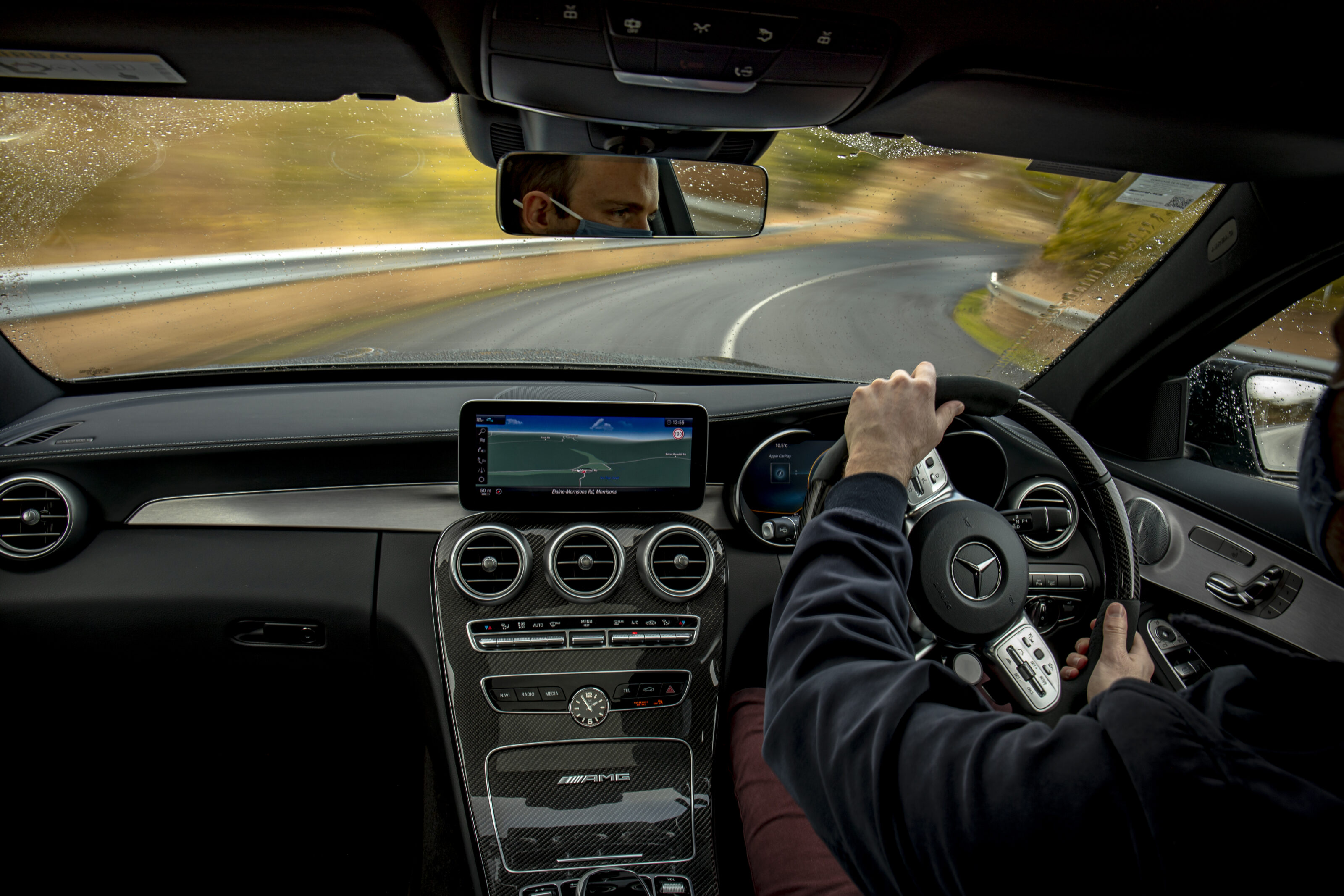
Wider tracks and tyres, bigger brakes with the option of carbon-ceramic fronts, solidly mounted rear subframe; a whole lot of work went into harnessing that monster engine.
It still required patience to drive, primarily because its rubber was still relatively narrow – 245mm front; 265mm rear – for a car of this weight and power, but it was now a genuine dynamic rival for the BMW M3. In fact, it almost went a bit too far in that direction.
Its undoubted performance allowed the forgiveness of many sins, but there was no escaping that the C63 could be a pain to drive day-to-day. The gearbox loved to clunk and jerk through low-speed manoeuvres and the ride was unrelenting; the adaptive dampers’ three stages were labelled Comfort, Sport and Sport+ but really should’ve been Stiff, Stiffer and Stiffest.
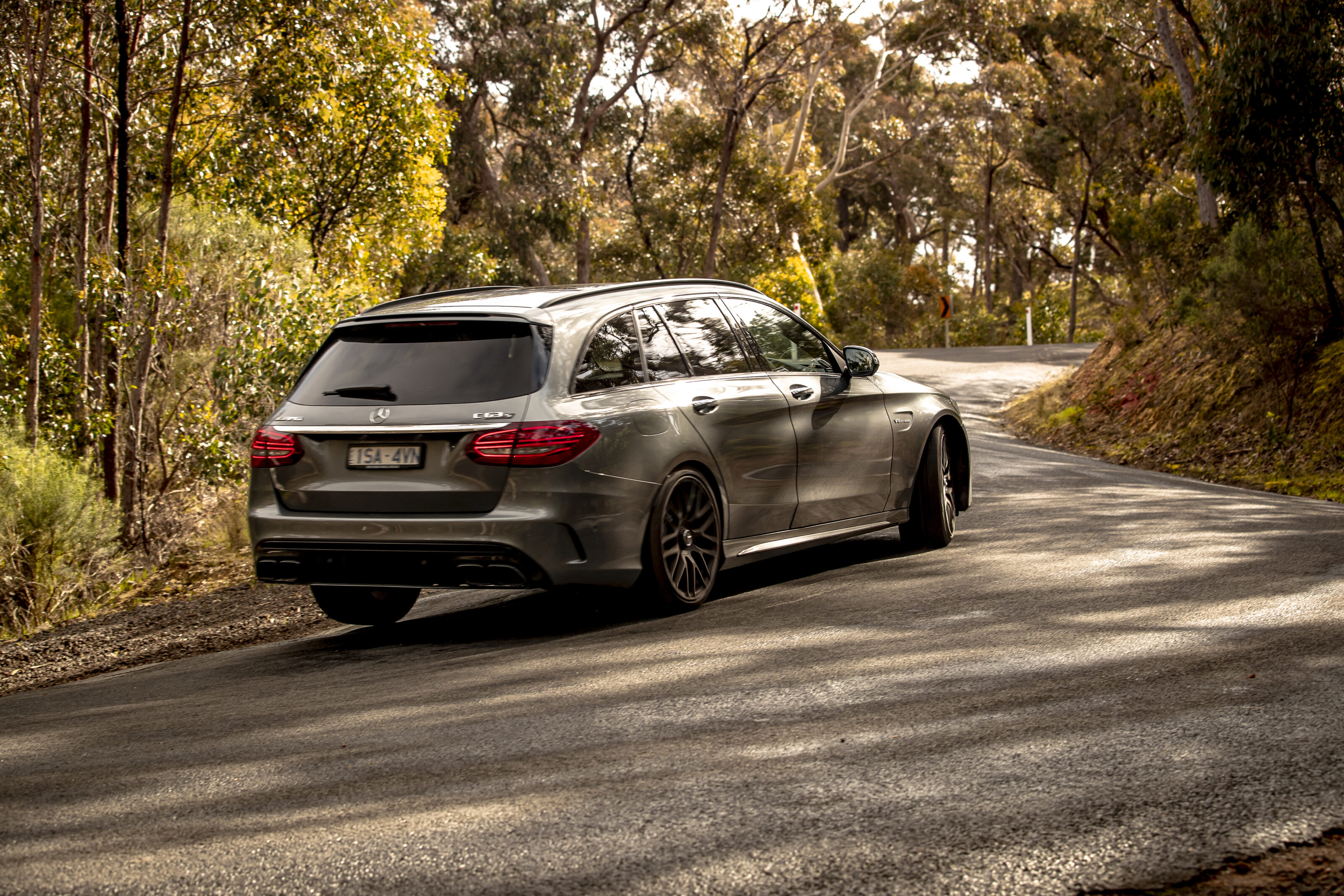
AMG clearly received plenty of customer feedback to the same effect, as the mid-life update in 2018 focused primarily on improving its daily manners. The suspension was successfully retuned to the point that Comfort was now a partially accurate descriptor, Sport was perfect for public road ‘progress’ and Sport+ need no longer be limited to flat-as-a-tack racetracks.
It’s not often that engines are left alone at facelift time, even if it’s just another 5kW or so, but 375kW/700Nm was understandably deemed ample. A switch from the older seven-speed to the new nine-speed MCT – which is a traditional automatic but with a wet clutch arrangement replacing the torque converter – resulted in quicker upshifts, more obedient downshifts, smoother low-speed behaviour and improved acceleration and fuel economy thanks to the closer ratios and wider overall spread.
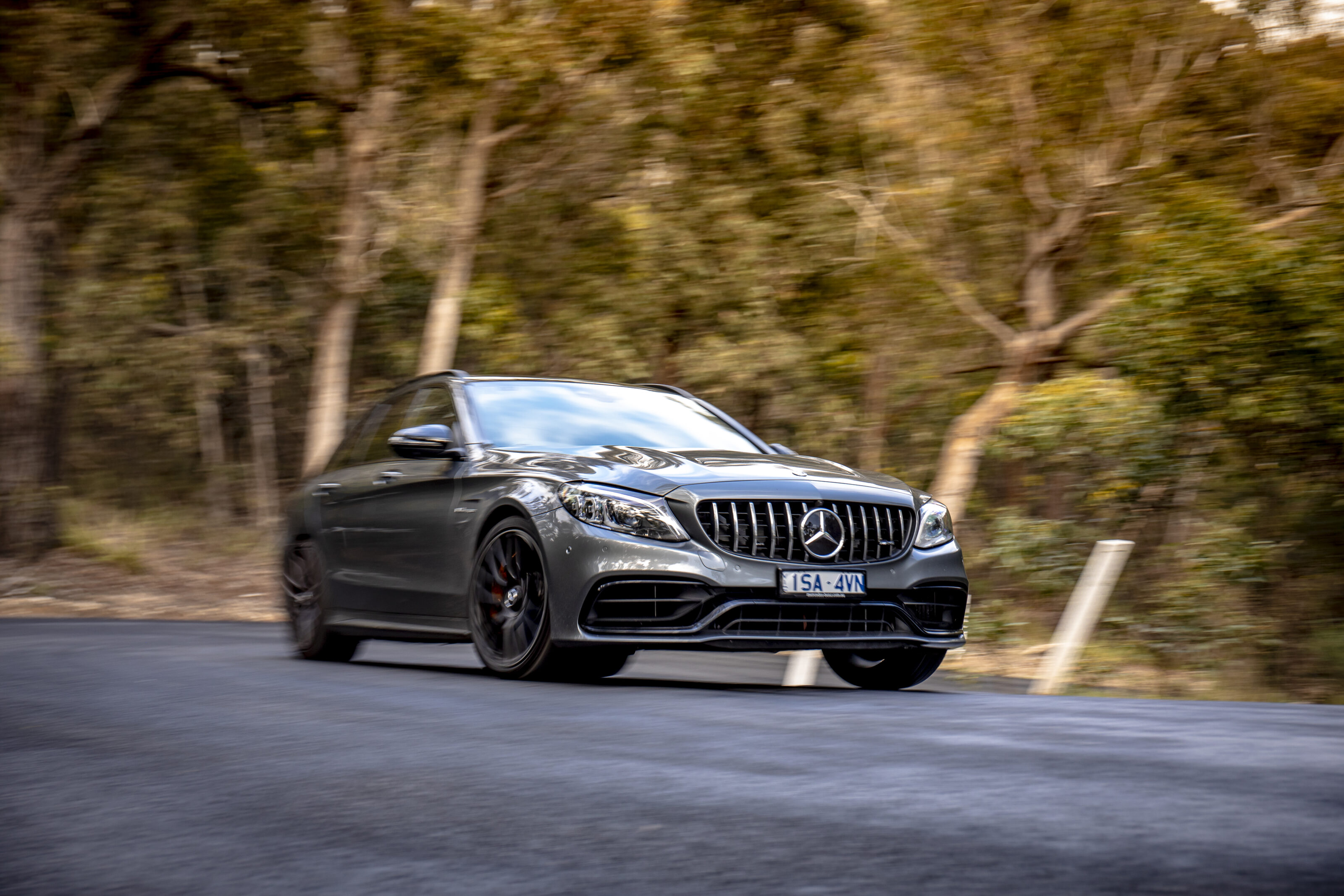
Inside there were bigger screens and a new steering wheel with a drive mode dial on the right and buttons to toggle various mechanical parameters on the fly, which made you feel a bit like Lewis Hamilton on a qualifying lap. High technology was also employed in an attempt to further ease the rear tyres’ burden of dealing with all that torque to varying degrees of success.
The nine-stage traction control lifted from the AMG GT R is ace. It sounds like a gimmick, and the fact that ESP has to be deactivated for it to come alive means it’s possibly of limited use in a day-to-day scenario, but the way you can perfectly tailor engine output to surface grip with a couple of clicks of the drive mode dial is remarkable.
Launch control became a lot easier, too, eradicating the need to pull both paddles to activate, though a certain subset of owners discovered to their dismay that it made stationary burnouts very difficult.
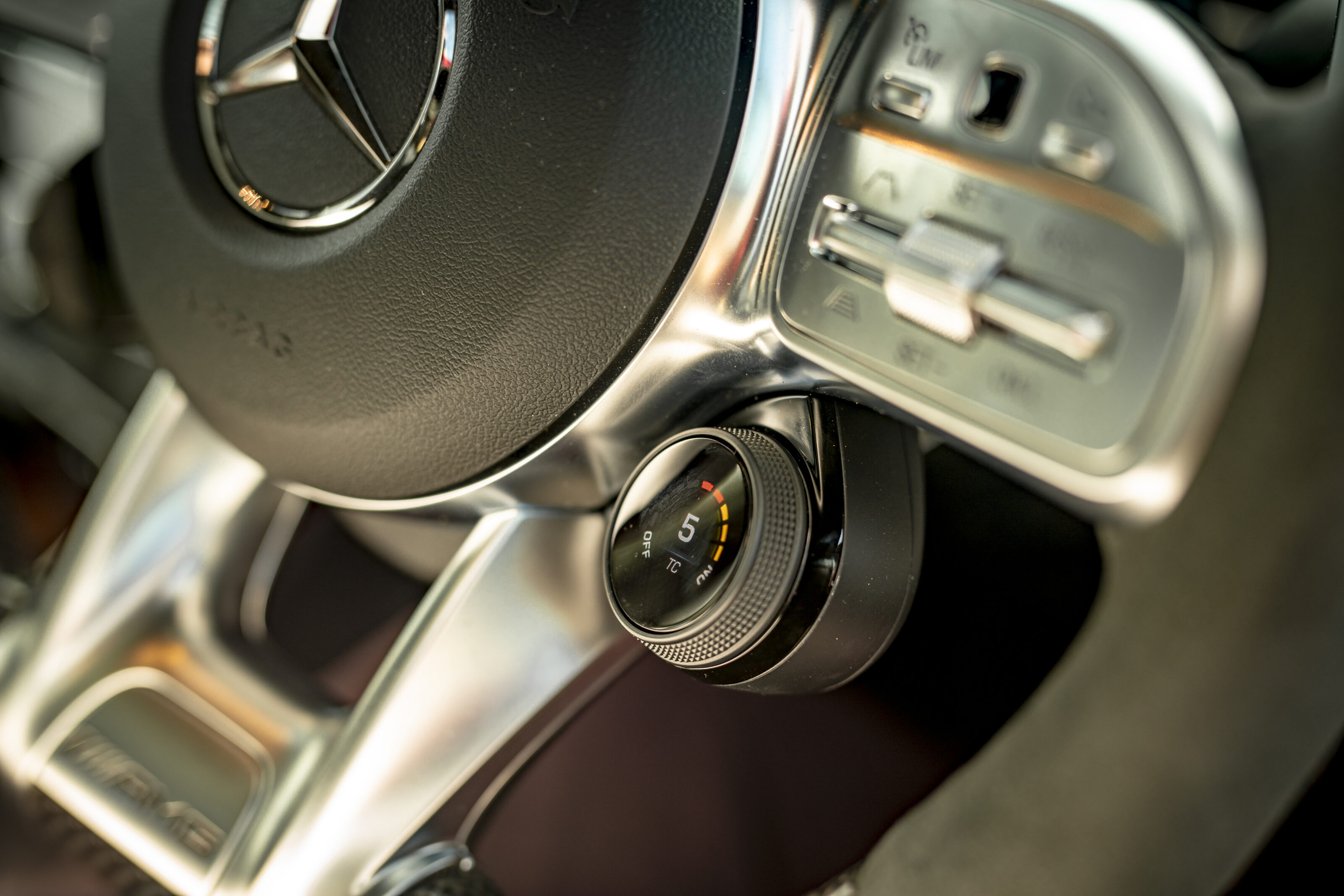
AMG Dynamics is less successful. It’s difficult to pin down what it actually is and what it actually does. As best I can discover it’s kind of an umbrella ESP system that controls how the rear diff interacts with the regular ESP.
Adjustable through four modes – Basic, Advanced, Pro and Master – in theory it knows what the car is doing before you do and subtly adjusts it accordingly to ensure control, yet in reality it seems to second guess the driver’s input and in doing so robs confidence – is the car going to respond as I expect it to? Maybe I’m not driving it properly.
Nevertheless, at full flight a W205 C63 S is an awesome thing. The Estate is a bit heavier than the sedan at 1750kg, but it would take a back-to-back drive to notice, as it offers all the same wonderful sensations only with more dog room.
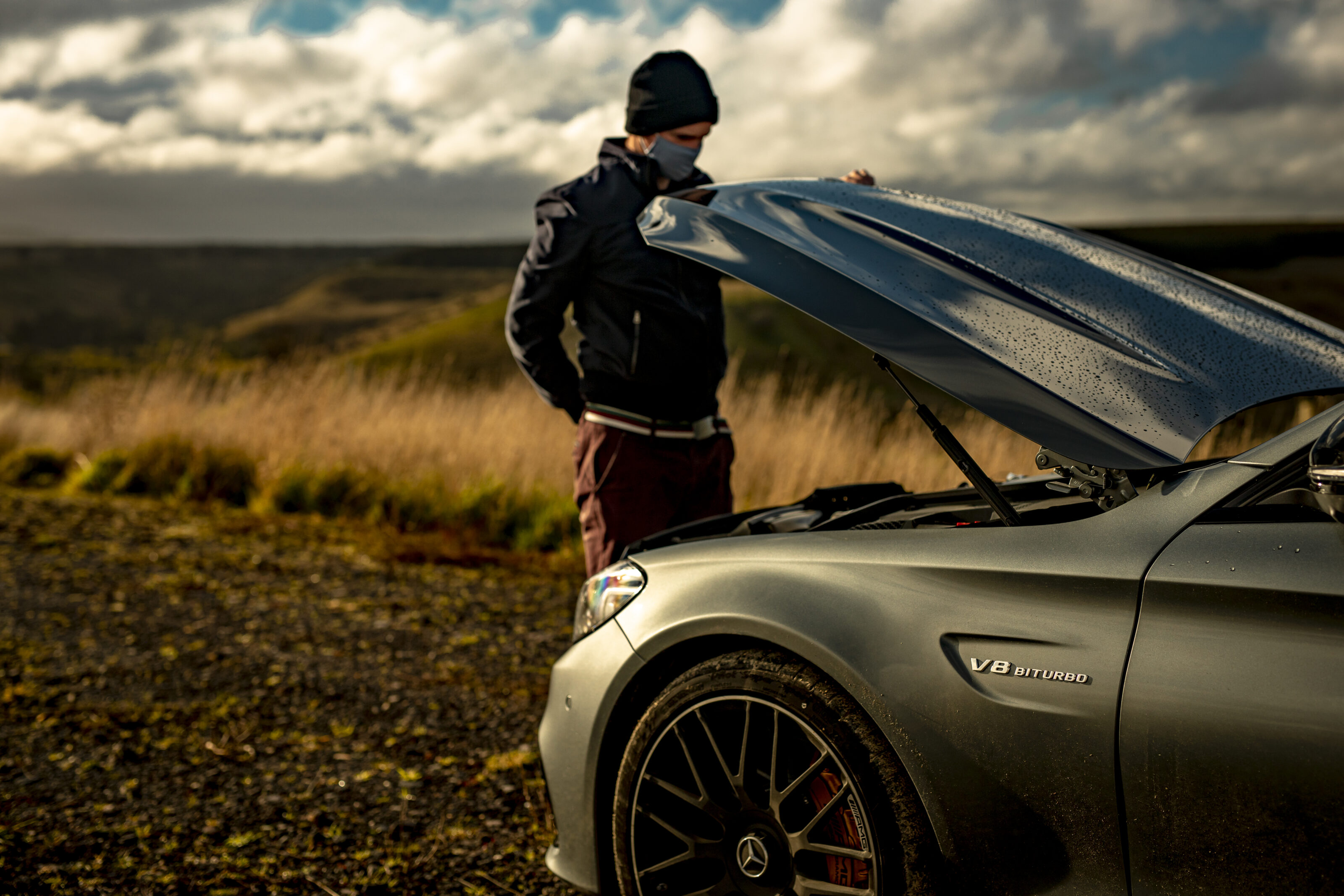
Suspension and ESP in Sport, engine in Race and gearbox in manual, it’s both ferociously fast and endlessly entertaining. Even in the wet conditions of our photoshoot on older-generation Michelin Pilot Super Sports it finds surprising traction yet can break it at will.
There’s a neat symmetry to using an Estate for this farewell feature, as the car described in the opening paragraph was a deep blue ’S’ Estate, optioned with carbon-ceramic brakes and Michelin Cup 2 tyres – it was truly fantastic.
It’s going to be a massively tough act for the W206 to follow, especially as though the badge will be virtually the same, the driving experience will differ dramatically. Standard all-wheel drive, albeit rear-biased, will eradicate wheelspin – though it’s a safe bet there will be a drift mode – and while the M139 sounds decidedly angry for a four-pot, it’ll never have the drama of a beefy V8. It’ll be a lot faster but also heavier, the lighter engine offset by the hybrid system.
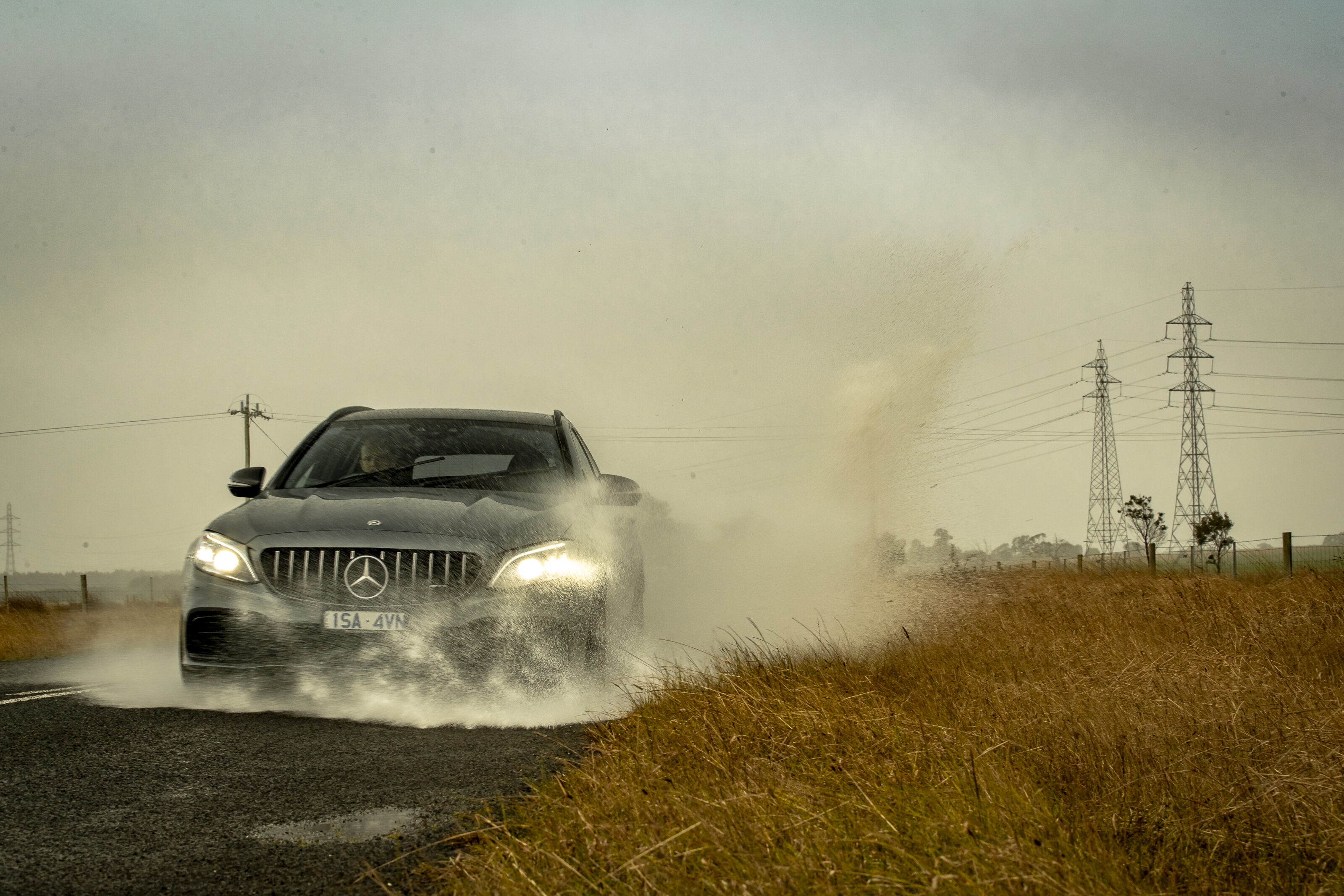
And yet, I can’t wait for the C63e. In truth, the traditional V8, rear-wheel-drive format has probably gone as far as it realistically can in this size of car. Adding more power would only exacerbate the current traction difficulties, while including all-wheel drive like its E63 S big brother would set off a sinful spiral of added weight anyway.
AMG’s switch to a four-cylinder hybrid has been forced by emissions regulations, but they’ve certainly made the best of the situation. If the current A45 is a preview of the W206’s potential, then the driving experience will be different but no less entertaining and current C63 S owners won’t be able to believe the traction and cornering prowess.
What’s more, with its EV-only capability, our elderly Portuguese friend will be able to continue her sweeping in peace. She might even crack a smile.
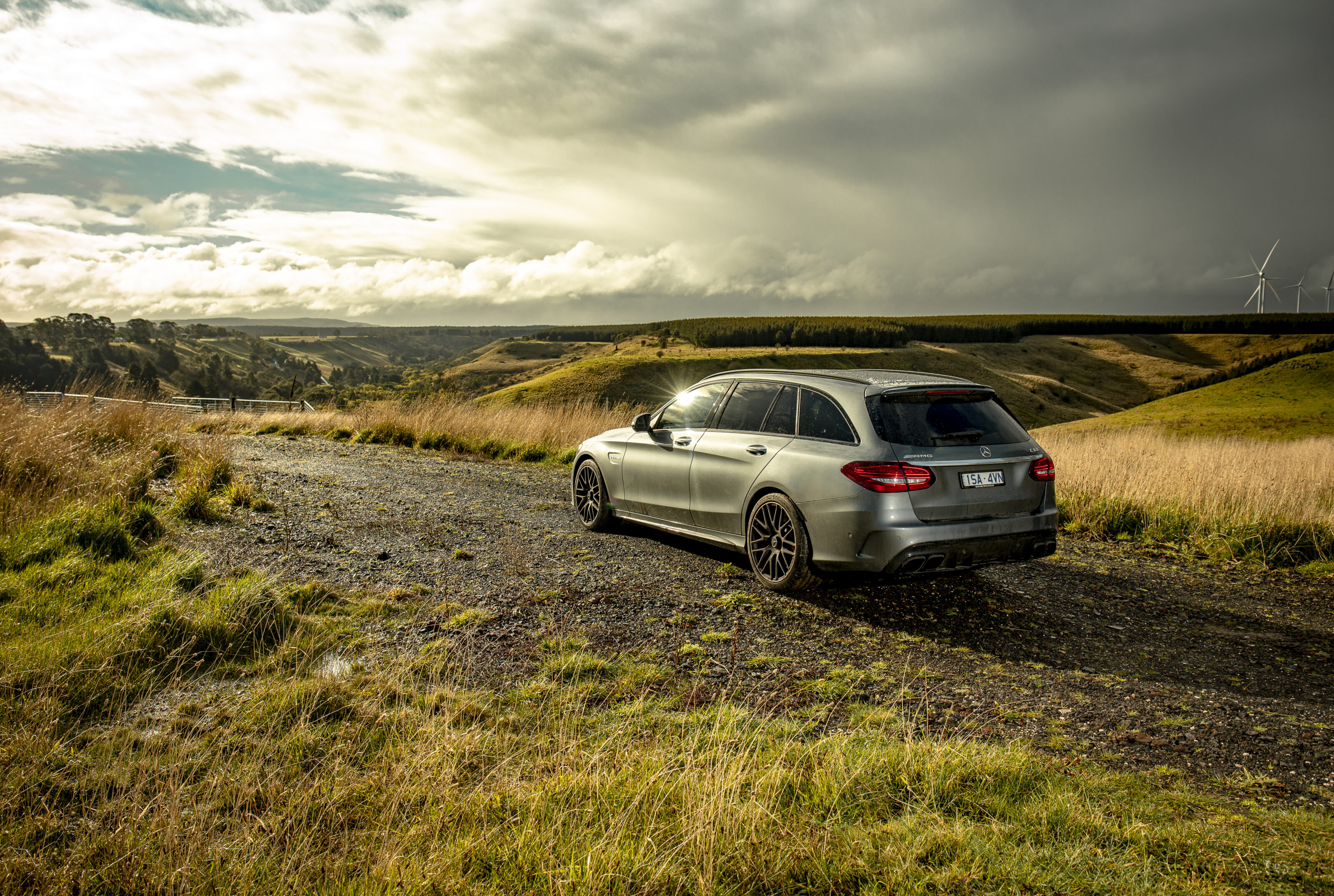
End of the road: AMG delivered for Aussie buyers and then some
AMG’s decision to retire the V8 from the C-Class hasn’t been the work of a moment. In many ways the writing has been on the wall for a very long time.
BMW last fitted a V8 to its M3 back in 2013 and Audi’s final 4.2-litre V8 for the RS4 came out of the Neckarsulm plant in 2017. That leaves Mercedes-AMG a bit of a holdout in this market, but sticking to the knitting hasn’t done sales that much harm, at least not here in Australia where cheap fuel, a cultural fondness for V8s and nothing in the way of emissions-based taxation saw the C63 prosper in its later years.
The Estate version featured here remains quite a rare sight, however, and it doesn’t have a great deal to do with Audi or BMW.
It’s identically powered sibling, the all-wheel drive GLC63 S SUV outsells it by a ratio of nine to one. That hurts our souls.
2021 Mercedes-AMG C63 S specs
| Body | 5-door, 5-seat wagon |
|---|---|
| Drive | rear-wheel |
| Engine | 3982cc V8, DOHC, 32v, twin-turbo |
| Bore x Stroke | 83.0×92.0m |
| Compression | 10.5:1 |
| Power | 375kW @ 5500-6250rpm |
| Torque | 700Nm @ 2000-4500rpm |
| Power/Weight | 214kW/tonne |
| Transmission | 9-speed wet-clutch auto |
| Weight | 1750kg |
| 0-100km/h | 4.1sec (claimed) |
| Suspension | A-arms, coil springs, adaptive dampers, anti-roll bar (f) multi links, coil springs, adaptive dampers, anti roll bar (r) |
| L/W/H | 4772/1839/1457mm |
| Wheelbase | 2840mm |
| Tracks | 1609/1546mm (f/r) |
| Steering | electrically assisted rack-and-pinion |
| Brakes | 402mm ventilated/drilled carbon ceramic discs, 6-piston calipers (f); 360mm ventilated/drilled discs, single-piston calipers (r) |
| Wheels | 19 x 8.5-inch (f) 19 x 9.5-inch (r) |
| Tyres | 245/35 R19 (f) 265/35 R19 (r) Michelin Pilot Super Sport |
| Price | $170,876 ($184,676 as tested) |


